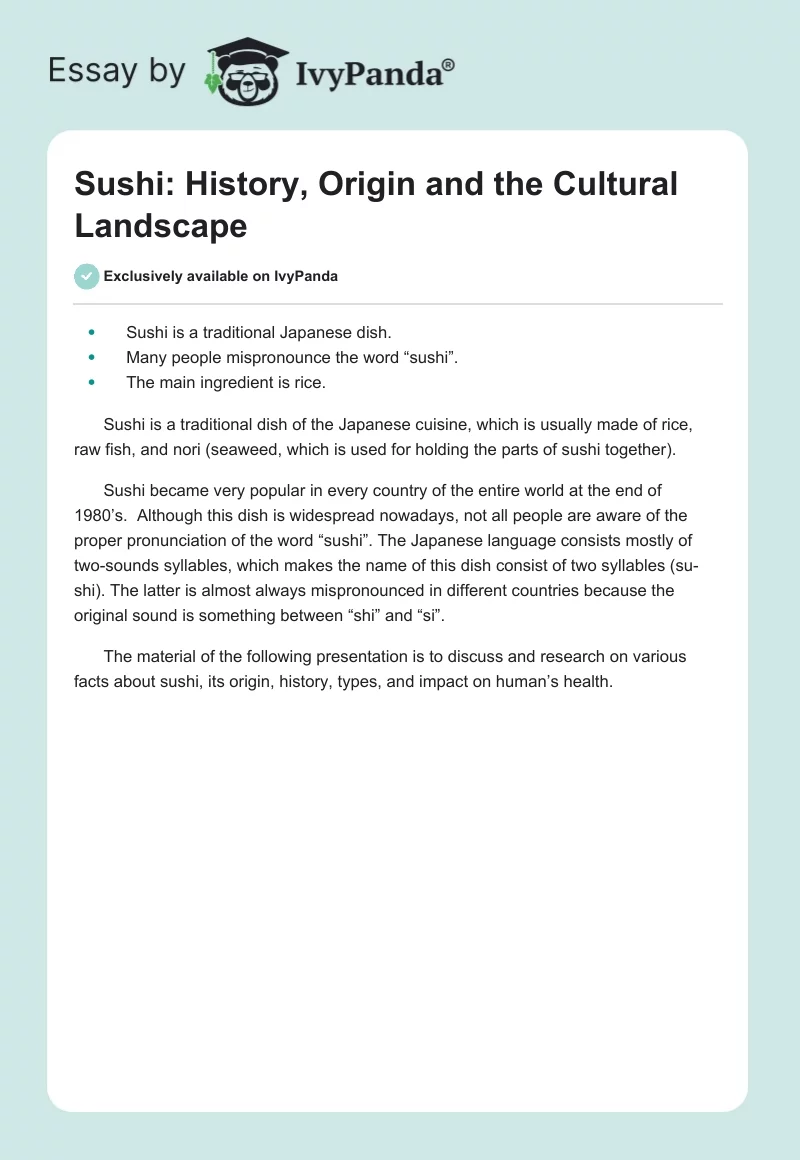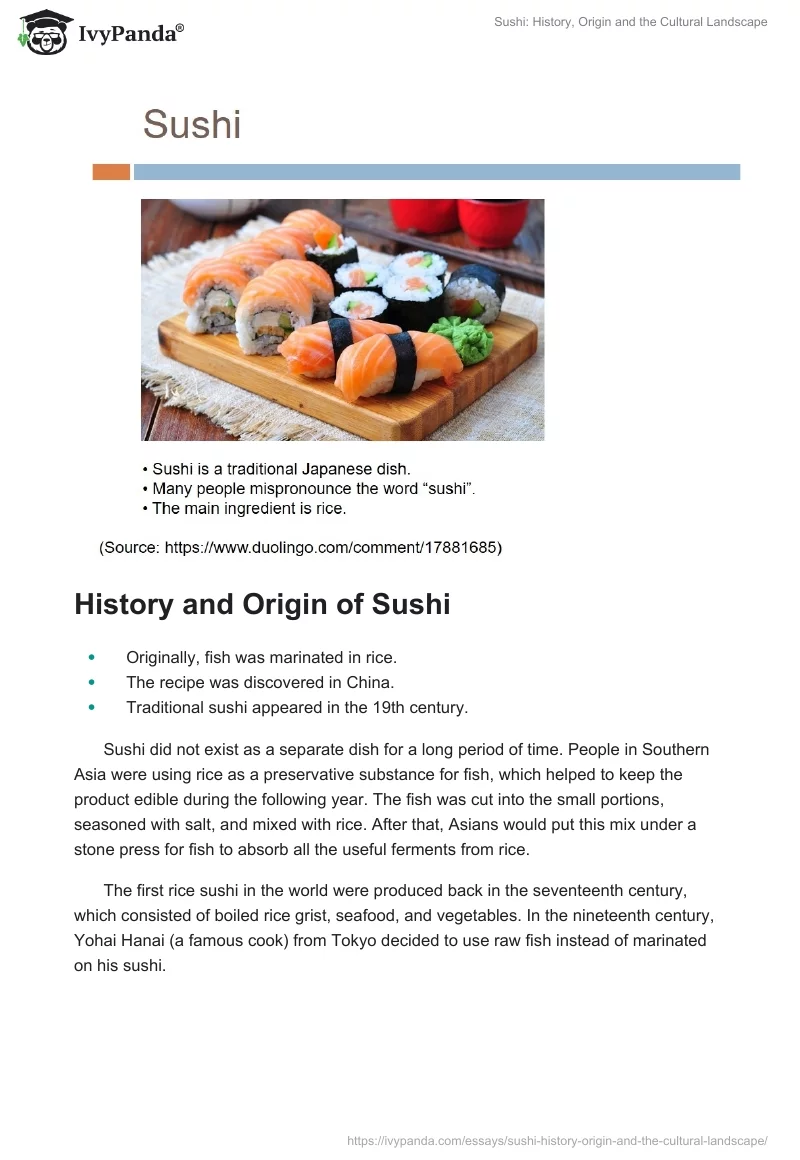- Sushi is a traditional Japanese dish.
- Many people mispronounce the word “sushi”.
- The main ingredient is rice.
Sushi is a traditional dish of the Japanese cuisine, which is usually made of rice, raw fish, and nori (seaweed, which is used for holding the parts of sushi together).
Sushi became very popular in every country of the entire world at the end of 1980’s. Although this dish is widespread nowadays, not all people are aware of the proper pronunciation of the word “sushi”. The Japanese language consists mostly of two-sounds syllables, which makes the name of this dish consist of two syllables (su-shi). The latter is almost always mispronounced in different countries because the original sound is something between “shi” and “si”.
The material of the following presentation is to discuss and research on various facts about sushi, its origin, history, types, and impact on human’s health.
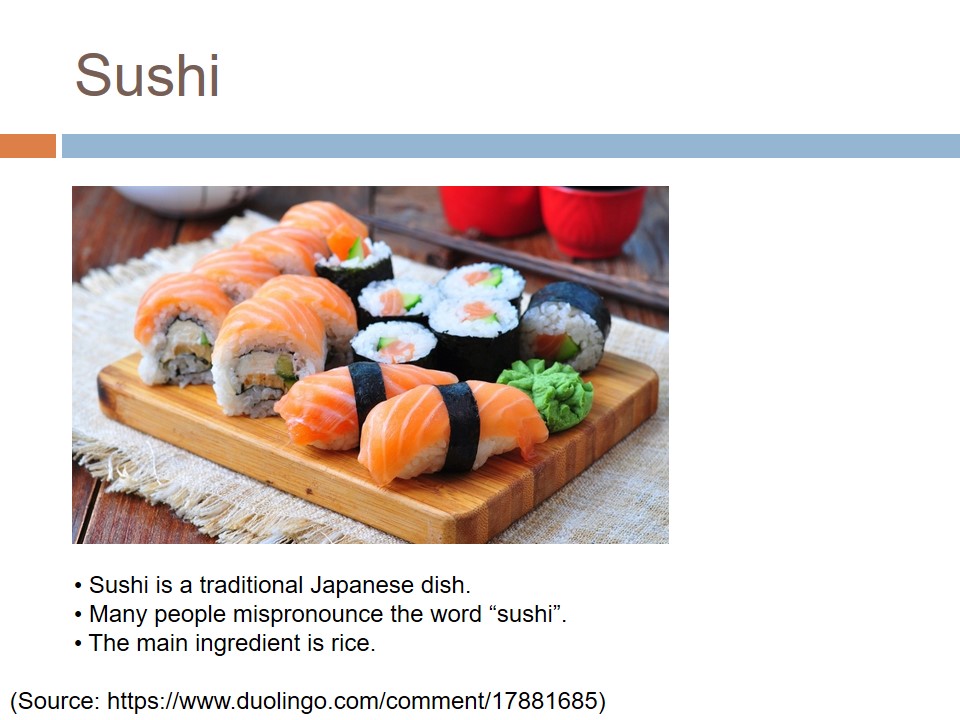
History and Origin of Sushi
- Originally, fish was marinated in rice.
- The recipe was discovered in China.
- Traditional sushi appeared in the 19th century.
Sushi did not exist as a separate dish for a long period of time. People in Southern Asia were using rice as a preservative substance for fish, which helped to keep the product edible during the following year. The fish was cut into the small portions, seasoned with salt, and mixed with rice. After that, Asians would put this mix under a stone press for fish to absorb all the useful ferments from rice.
The first rice sushi in the world were produced back in the seventeenth century, which consisted of boiled rice grist, seafood, and vegetables. In the nineteenth century, Yohai Hanai (a famous cook) from Tokyo decided to use raw fish instead of marinated on his sushi.
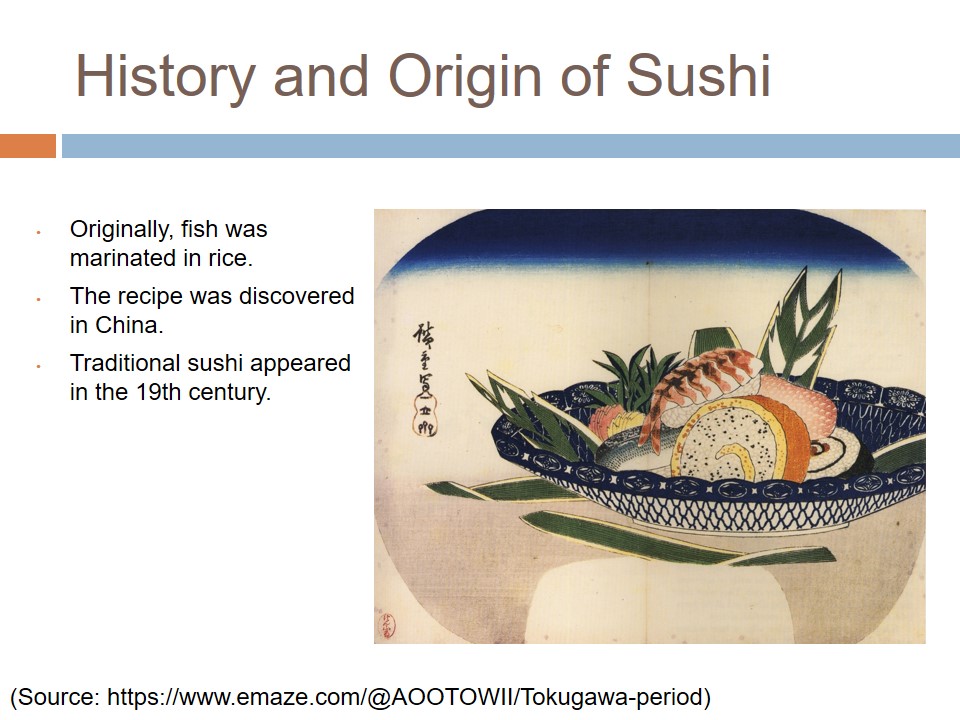
Sushi in Different Regions of Japan
- Traditional sushi;
- Tekone-zushi;
- Osaka zushi;
- Funa zushi;
- Sake-zushi.
Kyushu island is famous for its “sake-zushi”. The rice for this dish is purposely soaked with sake (traditional Japanese alcohol), which is usually served along with some exotic seafood.
The main reason why sushi are not the same in different Japanese regions is particular ingredients’ inaccessibility.
All these types of the traditional Japanese dish do not have significant differences in their cooking processes. It is just the matter of taste – some people like it better with specific ingredients, which might be replaced by more conventional and available products in another region. There are also some fish species that are used for sushi only in maritime provinces. Otherwise, the filet of this fish will not have its original taste anymore.
Other differences may depend on various bars in these cities – they may use original recipes in order to attract new clients.
Sushi are not identical in every region of the Japanese archipelago. Moreover, different regions serve various types of sushi.
The traditional sushi that everyone has heard of are produced in Tokyo since 1820. As it was said before, a professional cook originated this dish by using raw fish.
Such regions as Chubu and Kanto also serve another type of sushi, which is called “Tekone”. This recipe includes soy marinated tuna on the top of the rice, which was previously soaked with vinegar.
Another type of sushi is produced in Kansai and Chugoku and called “Osaka zushi”, which are rolled in a perfect quadrangle shape. There is one more sort of this spectacular dish that exists on the territory of Shiga prefecture (“Funa zushi”), which is considered to be done in the ancient style.
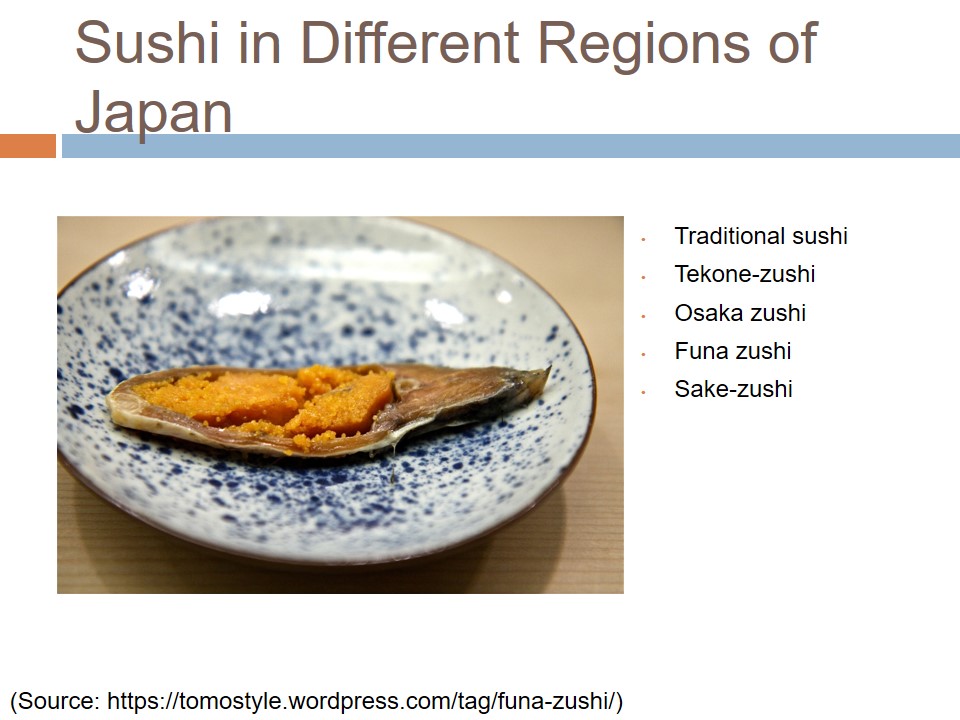
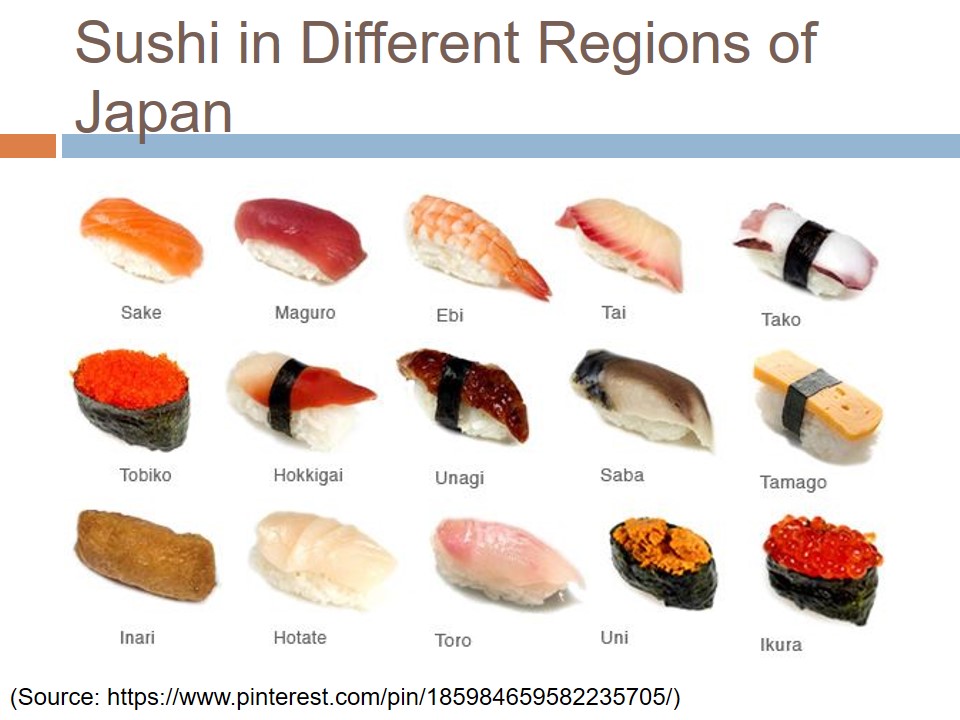
Cultural Landscape of Japan
- Rice terraces in Obasute.
- Aragijima rice terraces.
- Rural Landscape of Kashihara.
- Fat greenling.
- Tilefish.
- Japanese loach.
- Fugu.
Japan has a developed agricultural industry – many local farmers grow rice in their fields, which is very profitable for the country because Japan remains one of the biggest rice exporters in the entire world. Besides, Japan is famous for its sea cultivation, which helps to grow nori and other distinct sorts of seaweed (Rubenstein, 2017). These areas also may be used for fish propagation because sometimes professional fishers charge too much for large sea-fish. Furthermore, there are grand rice terraces in Chikuma, Nagano that were designated as Japan’s Important Cultural Landscape in 2010.
Therefore, the cultural landscape of the country of the rising sun is beneficial for the local sushi bars because their owners buy all the required ingredients at a low price.
As it was stated above, there are many specific varieties of sushi in different regions of Japan. Therefore, national cooks use various sorts of rice. As Japan remains one of the biggest manufacturers of this cultivation product, local sushi bars prefer to use japonica rice as the main ingredient for their dishes. Nevertheless, sushi are to be served along with sake, which requires a use of Yamada Nishiki rice. Moreover, Sasanishiki sort of this popular plant preserves its taste, regardless of the serving time or temperature.
Nevertheless, fish is another essential ingredient for sushi and sashimi. Therefore, such elements of Japanese Cultural Landscape as Kure port and fishing townscape, produce some magnificent fish species as Fat greenling, Fugu, Japanese loach, Tilefish, and others.
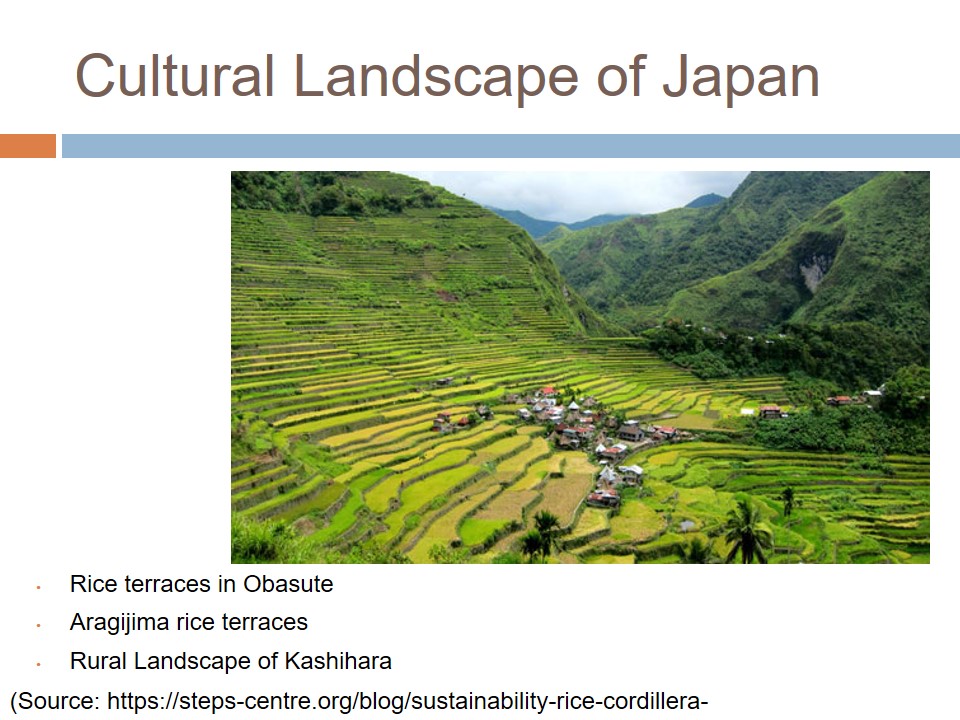
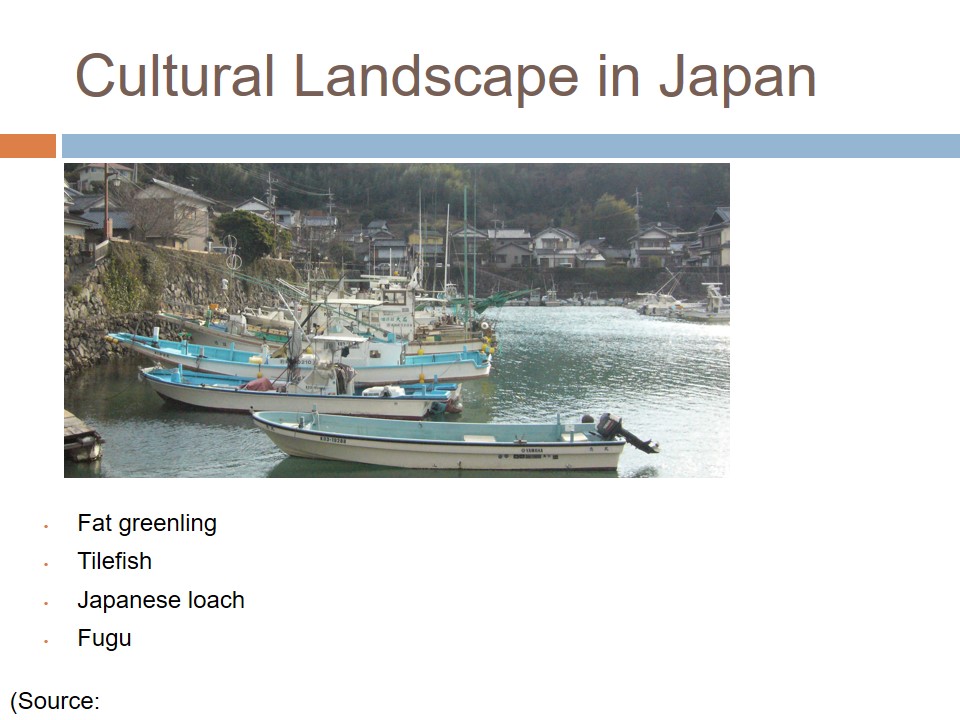
Sushi Diffusion All Over the World
- China.
- Russia.
- The USA.
- England.
- Germany.
- Brazil.
- Interest to Japanese culture.
- Sushi’s unique texture and taste.
- Nutritious meal.
As it was mentioned above, the first sushi appeared in the South Asia, but the traditional sushi were elaborated by Japanese. Almost all restaurants in the world started to produce sushi since 1980’s. This phenomenon is called diffusion.
The term of diffusion was established by an eminent physicist, Tomas Graham who discovered that the molecules of any substance are likely to spread all over the body. The same thing happened to sushi because they became popular all over the world, so they are equally concentrated on the Earth surface (scientific viewpoint). There are different examples of contagious diffusion all over the world, such as the Internet, pizza, soccer, and so on (Ashkenazi & Jacob, 2014). Nevertheless, sushi became widespread in such countries as China, Russia, the USA, England, Germany, Brazil, and others.
There are multiple reasons why sushi became so popular.
The first reason is the dish’s unique structure and taste – there are no similar meals in any cuisine in the world. Japanese may eat one set (six pieces) during their lunch break, but other nationalities order from 12 to 20 pieces per person. Many sushi fans say that there is a wide variety of ingredients for sushi, so there is always something new to try.
Besides, other nationalities show their interest to the culture of Japan by having sushi because sushi bars provide specific instructions for enjoying this dish (Wank & Farrer, 2015). There are even interest clubs in the United States of America, where people gather to discuss and to eat some their favorite meal.
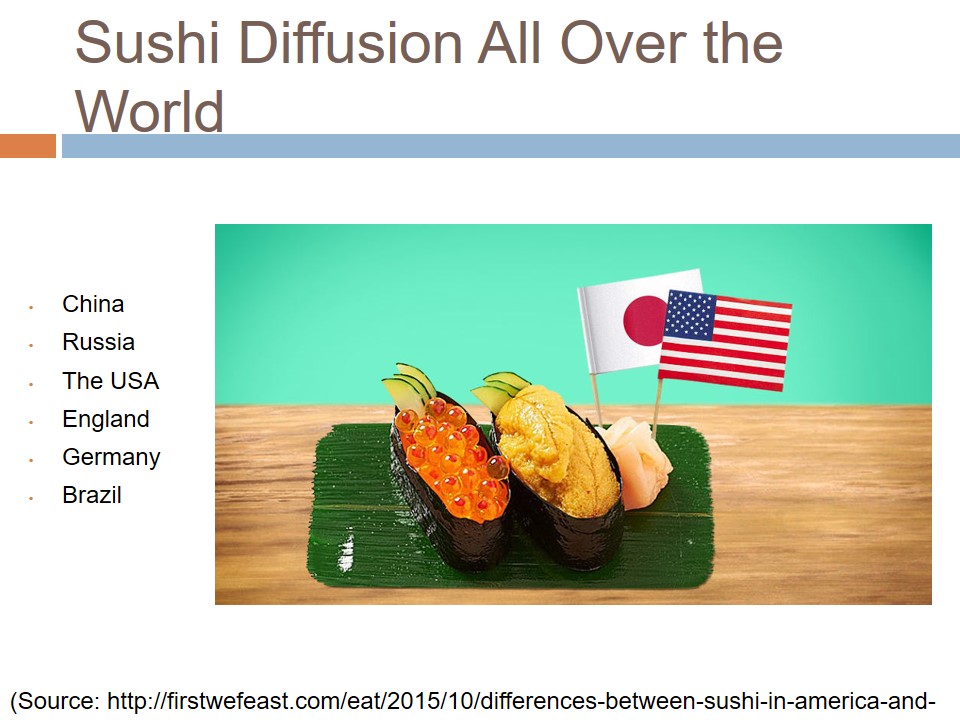
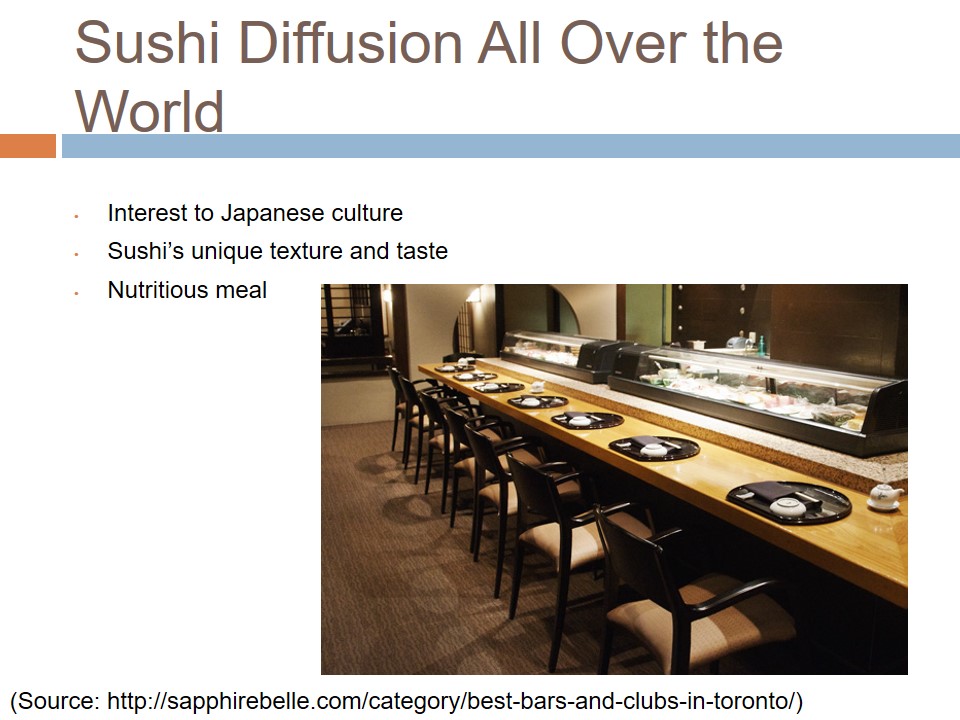
Distance Decay Impact on Sushi
- Not sea fresh fish.
- Suspicious delivery services.
- Poisoning and related diseases.
- Expensiveness.
- Originality.
- Culture traditions.
- Professional cooks.
- Location.
- Quality.
As it was stated above, not all the regions of Japan are able to serve fresh fish on their sushi due to the distance decay.
The majority of sushi bars in the world are not situated in the maritime provinces (Chen, 2015). Therefore, the fish that they serve there is usually frozen, which is unacceptable for the true sushi. This factor may cause such health issues as poisoning, helminthiasis, stomach disorder, and so on. It is essential to remember that the high-quality sushi are served only in the bars near waters. There were many cases of problems with peopledigestion after meals in suspicious sushi bars.
Furthermore, many consumers prefer to use delivery services for a sushi meal, which may not be of a high quality because the cooking process is not controlled by the customers (Fukita, Asaki, & Katakura, 2014). Professional cooks never serve their sushi to a person who did not witness the cooking process.
Another distance decay impact on sushi is the dish’s price. Japan produces the freshest, the most delicious, and the most expensive sushi in the world. Therefore, the majority of these services in Japan are never overwhelmed with the local population because tourists are ready to spend some extra money for good sushi during their vacations. Hence, some restaurants that serve this dish in other parts of the world are usually less expensive because cooks from Japan are unlikely to work at the big distances from their homes. Nevertheless, some people offer sushi masters from Japan a very high salary, which makes their place automatically more popular and expensive.
Besides, this widespread dish is less expensive in the places that do not have any notes of the Japanese interior, culture or atmosphere.
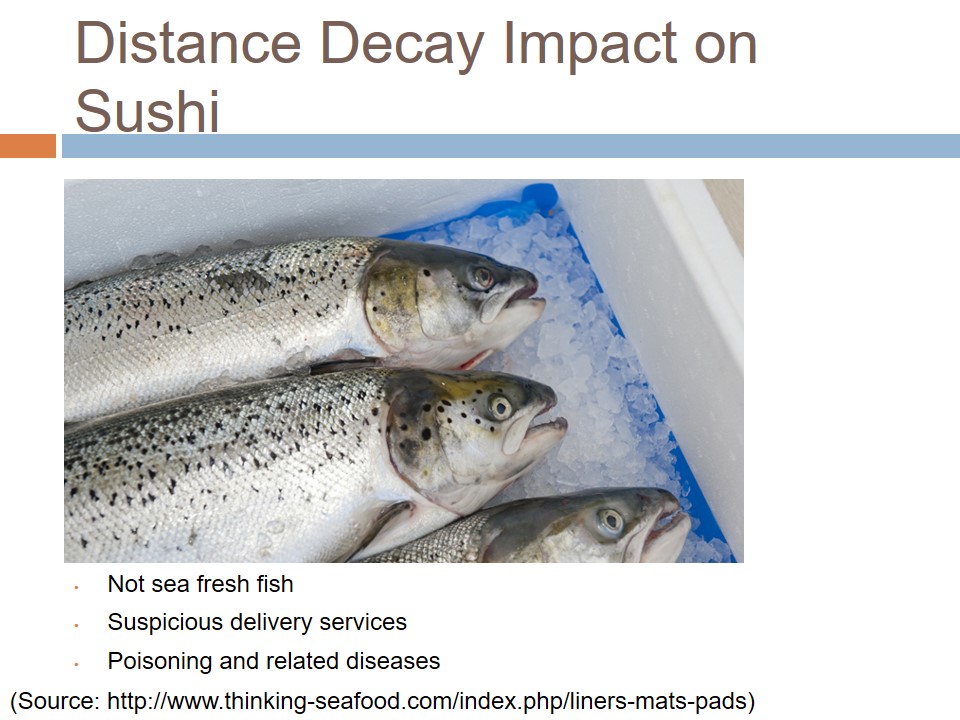
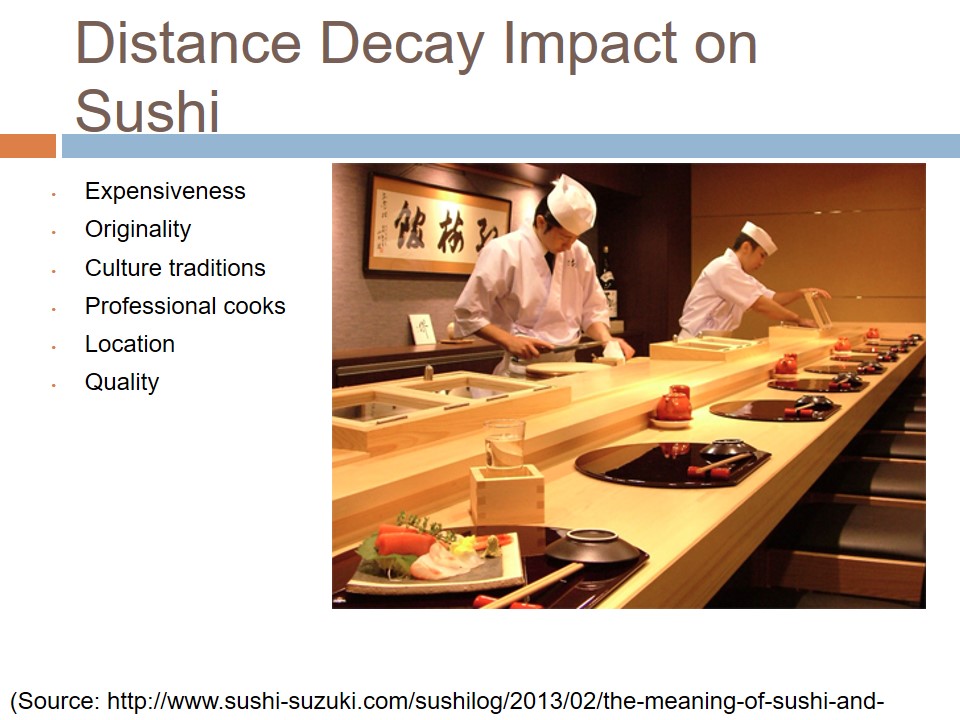
Sushi Degustation Etiquette
- No sticks.
- No rice in the soy sauce.
- No wasabi on sushi.
- Use ginger between different flavors.
Sushi is a very cultural dish, which requires the following specific instructions for a better taste. People who come into a sushi bar to enjoy this meal for the first time, usually make common mistakes. The first mistake is to dip one’s roll or a sushi piece in a soy sauce, which makes the dish taste awkward. Instead of putting the whole piece into a soy dish, it would be proper just to sprinkle a slice of fish with it. Another stereotype about sushi is that this dish is only to be eaten with sticks, which is not true. Moreover, a sushi master will never serve his sushi with sticks in Japan – it is proper to use one’s fingers to enjoy the meal because the sticks are usually used for ramen (a traditional Japanese noodle soup).
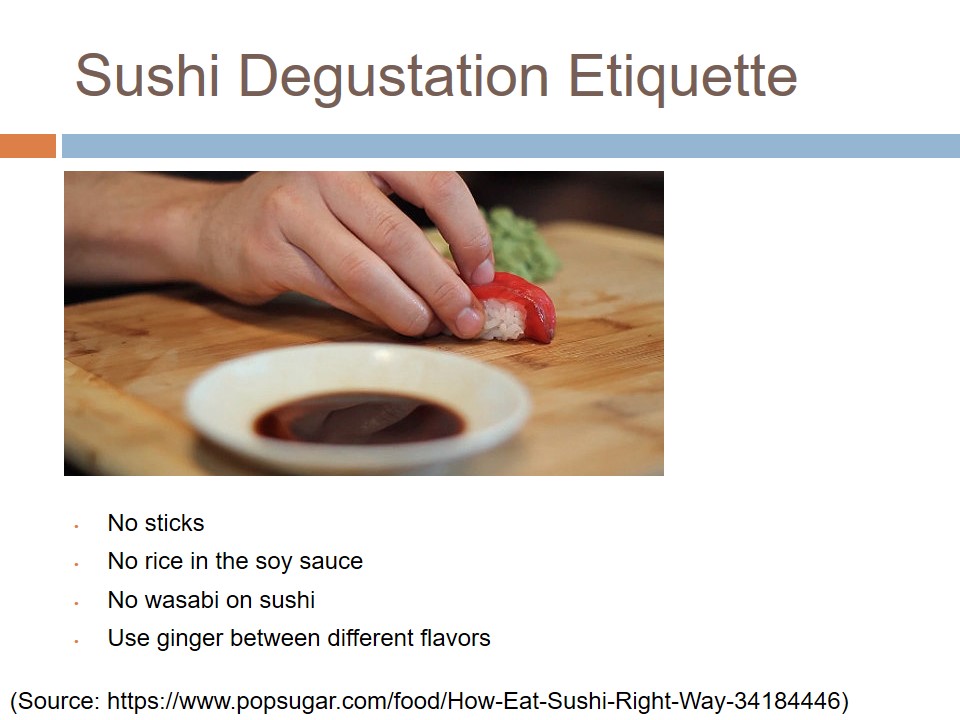
Conclusion & Summary
- Originated in the 17th century.
- Widespread all over the world.
- Might be dangerous for human’s health.
Sushi is a widespread dish that was originated in Japan since the seventeenth century. Different regions of the Japanese archipelago produce various types of this dish with a big range of ingredients. Japan’s agricultural industry and cultural landmarks are very beneficial for sushi business because the local bars use only the best sorts of rice and only a fresh fish. The sushi’s original way of degustation is now popular in the entire world, which gives cooks from Japan better opportunities in their careers. Consumers have to be aware of the fish quality in their sushi in order not to gain some dangerous diseases. There are a few traditional rules of sushi etiquette that are essential to follow during the meal.
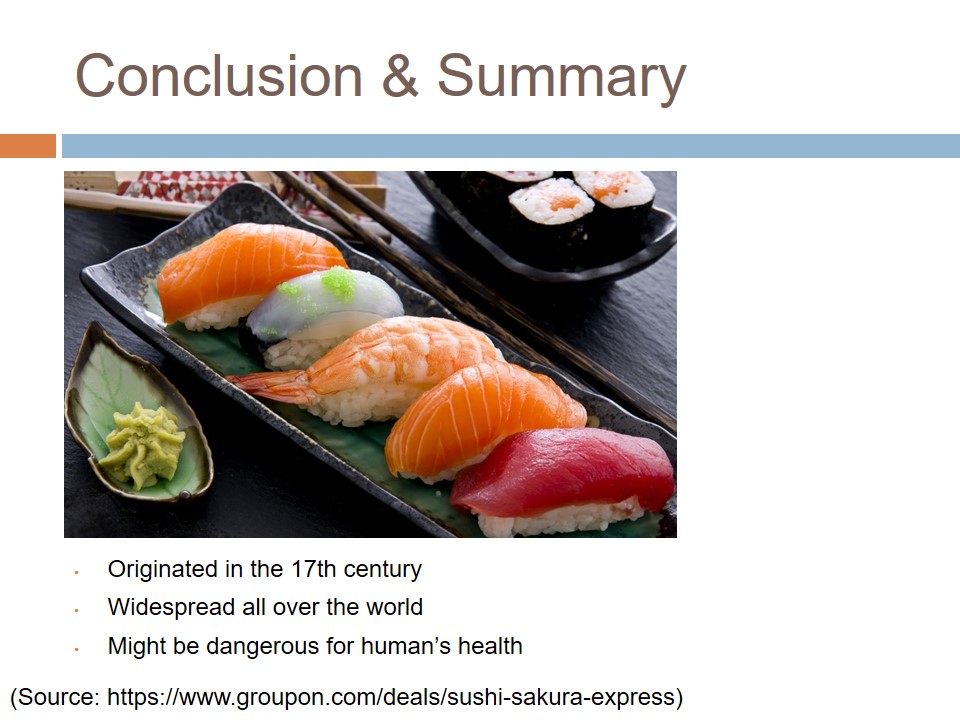
References
Ashkenazi, M., & Jacob, J. (2014). The essence of Japanese cuisine: An essay on food and culture. London: Routledge.
Chen, Y. (2015). The distance-decay function of geographical gravity model: Power law or exponential law? Chaos, Solitons & Fractals, 77(2), 174-189. Web.
Fukita, Y., Asaki, T., & Katakura, Y. (2014). Some like it raw: An unwanted result of a sushi meal. Gastroenterology, 146(5), 6-9. Web.
Rubenstein, J. M. (2017). The cultural landscape: An introduction to human geography. Upper Saddle River: Pearson.
Wank, D. L., & Farrer, J. (2015). Chinese immigrants and Japanese cuisine in the United States: A case of culinary glocalization. The Globalization of Asian Cuisines, 59(6), 79-99. Web.

